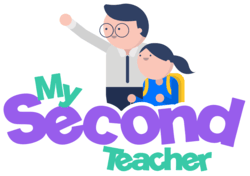
In the rapidly evolving world of education, integrating digital learning tools in schools is essential to prepare students for the future. Digital learning tools bridge the gap between traditional teaching and the demands of a tech-driven world. From AI-powered learning materials, smart classrooms, to online learning platforms, technology is reshaping academic experiences. These digital tools enhance engagement and interactivity for students by fostering active participation in the classroom.
When digital learning tools are integrated into the daily class activities rather than used as an additional resource, schools can create a more structured and result-driven learning environment.
Why Integrate Digital Learning Tools into the Classrooms?
The modern workforce is increasingly reliant on technology. As industries shift towards automation, artificial intelligence, and data-driven decision-making, schools play a crucial role in laying a strong foundation where students learn technical skills to remain competitive.
Traditional learning methods often struggle to fully engage the new-age students. They tend to rely on a one-size-fits-all approach that doesn’t cater to the diverse needs of today’s learners. Hence, teachers often face challenges in meeting the unique learning needs of students, personalising guidance, and assessing their performance to offer meaningful support.
Recommended Reading: Teachers Empowering the New Generation with Online Learning
This is where digital learning tools play an important role in transforming the educational experience.
Digital tools bring a new level of interactivity, personalisation, and accessibility to the classroom. Smart classrooms leverage technology such as virtual simulations or interactive videos, which bring textbook concepts to life. Additionally, gamified learning platforms improve attention span, helping students stay focused and eager to participate in their learning journey.
Moreover, these tools also offer teachers dynamic multimedia resources to cater to diverse teaching styles, saving teachers time and automating manual tasks. For instance, automated grading systems streamline assessment evaluation, saving valuable time and allowing teachers to focus on making meaningful interactions with students. Additionally, real-time data insights enable teachers to track individual and class-wise progress, empowering teachers to adjust their teaching strategies.
Recommended Reading - Role of Teachers in Promoting Digital Literacy
Beyond the classroom, integrating digital tools into schools substantially offers benefits for school administration. The data provided by online learning platforms equips school leaders with real-time insights into overall school performance. These insights allow school administration to boost learning outcomes further and optimise resource allocation. By automating day-to-day operations, schools can achieve greater efficiency and ensure that both academic and administrative processes run smoothly.
One of the leading EdTech platforms, transforming this educational landscape by digitising the overall school ecosystem, is mySecondTeacher.
mySecondTeacher: Revolutionising Digital Learning for Schools
mySecondTeacher offers a comprehensive range of digital tools to enhance students’ learning performance while empowering teachers with data-driven insights. For schools aiming to integrate digital learning into their learning, mySecondTeacher offers a holistic approach to curriculum enhancement. By embedding digital tools into lesson plans, the platform ensures that technology-driven tools align seamlessly with educational objectives. While the students benefit from its personalised learning approach and teachers can easily manage their in-school tasks, schools benefit from improved administrative efficiency, real-time data insights, and streamlined academic operations. By leveraging mySecondTeacher’s advanced technology, schools can create a digital-first learning environment that improves engagement, enhances student outcomes, and is accessible at any time.
The integration of digital learning tools in the classrooms is no longer optional- it is a necessity for a tech-driven world. That is why schools or institutions must take proactive steps to integrate digital tools into the curriculum. By investing in training, infrastructure, and collaborative technology, schools can ensure that students develop essential skills that make them future-ready.
